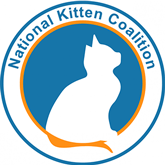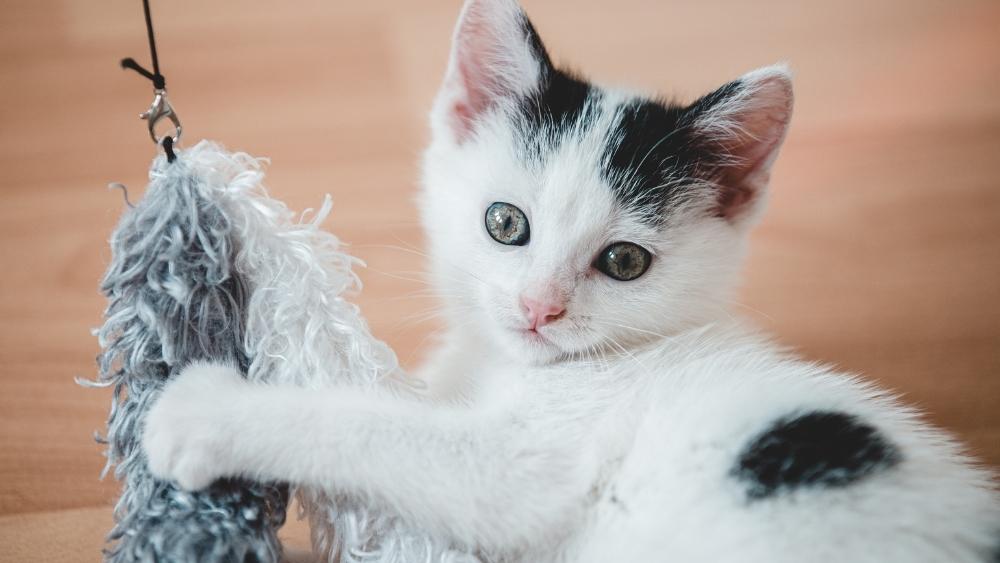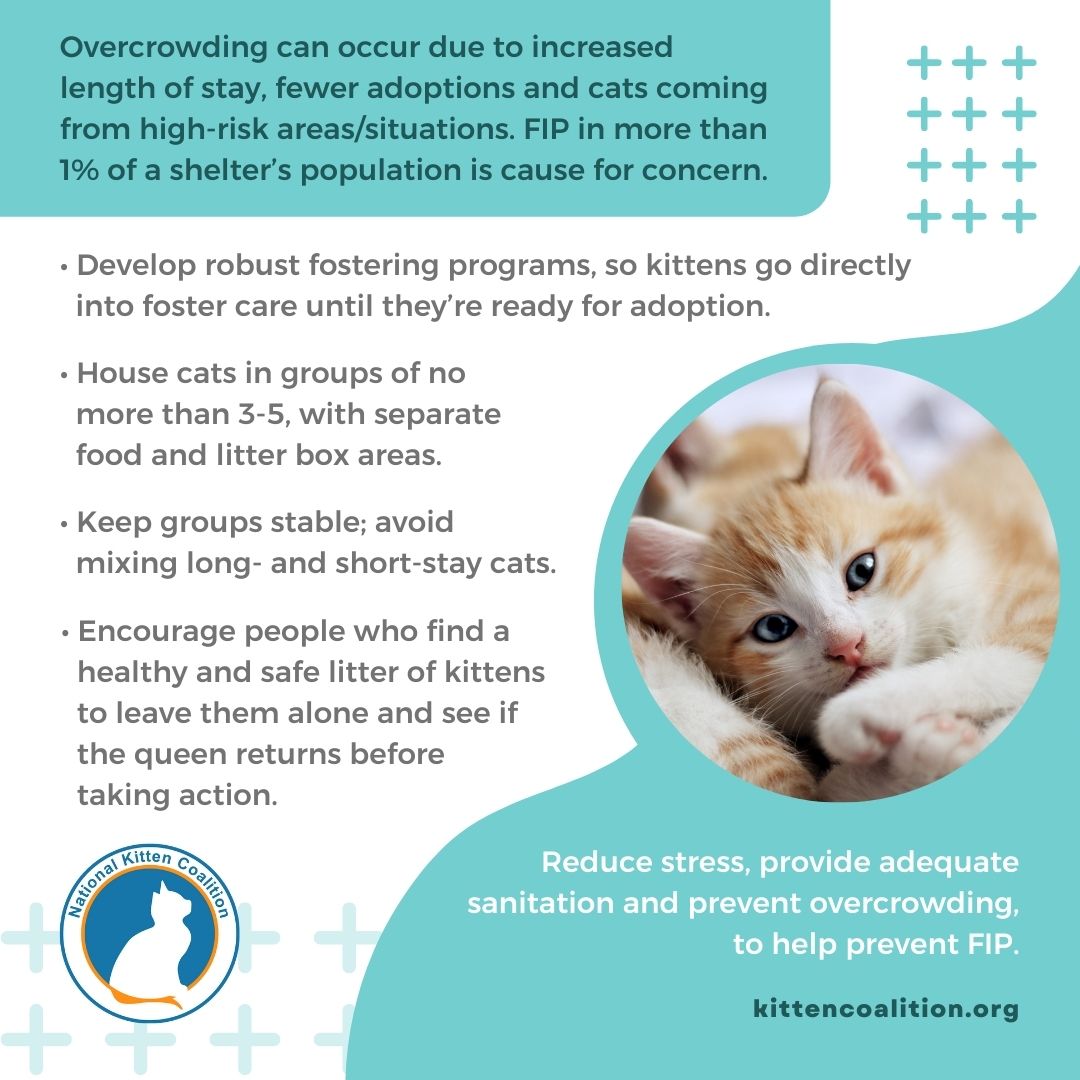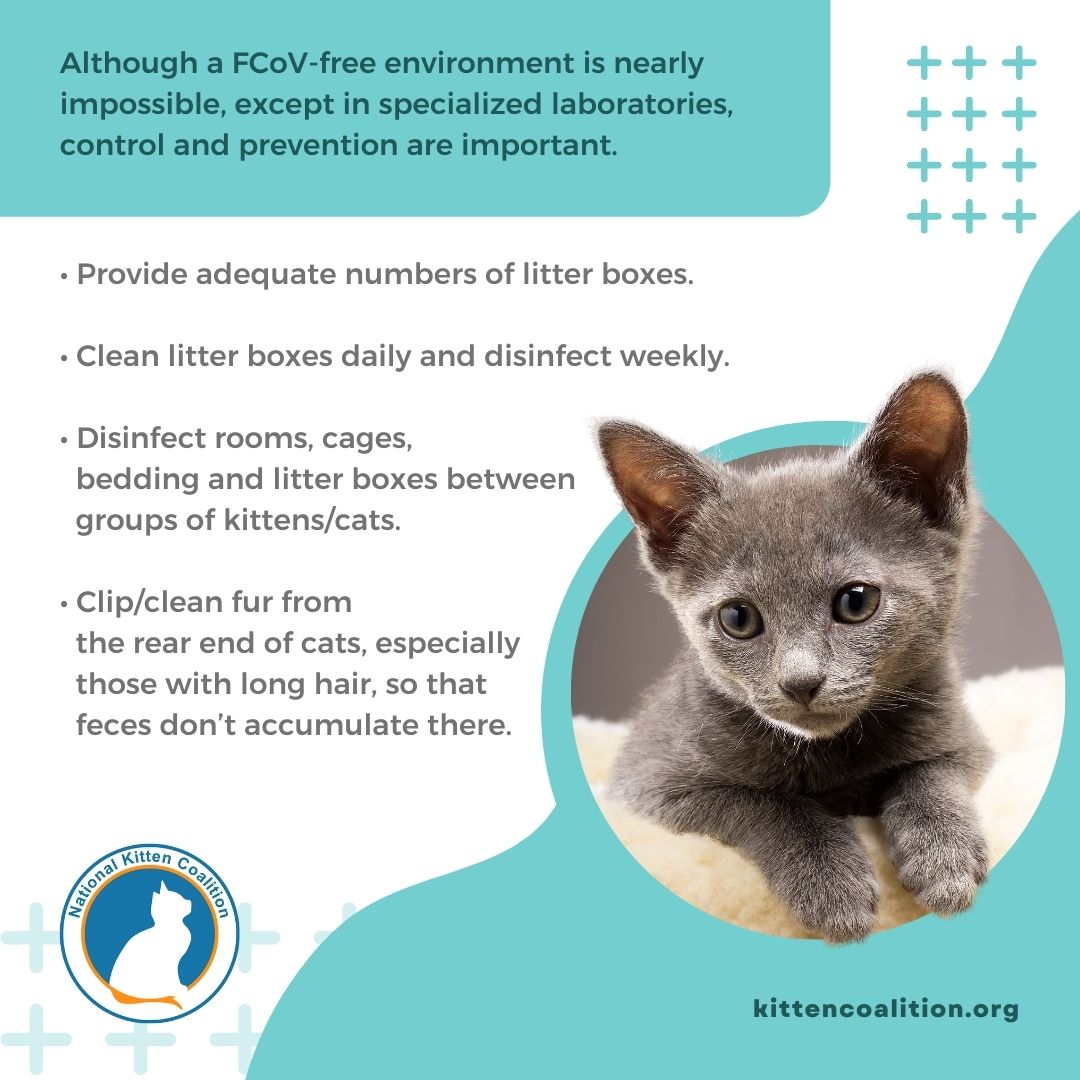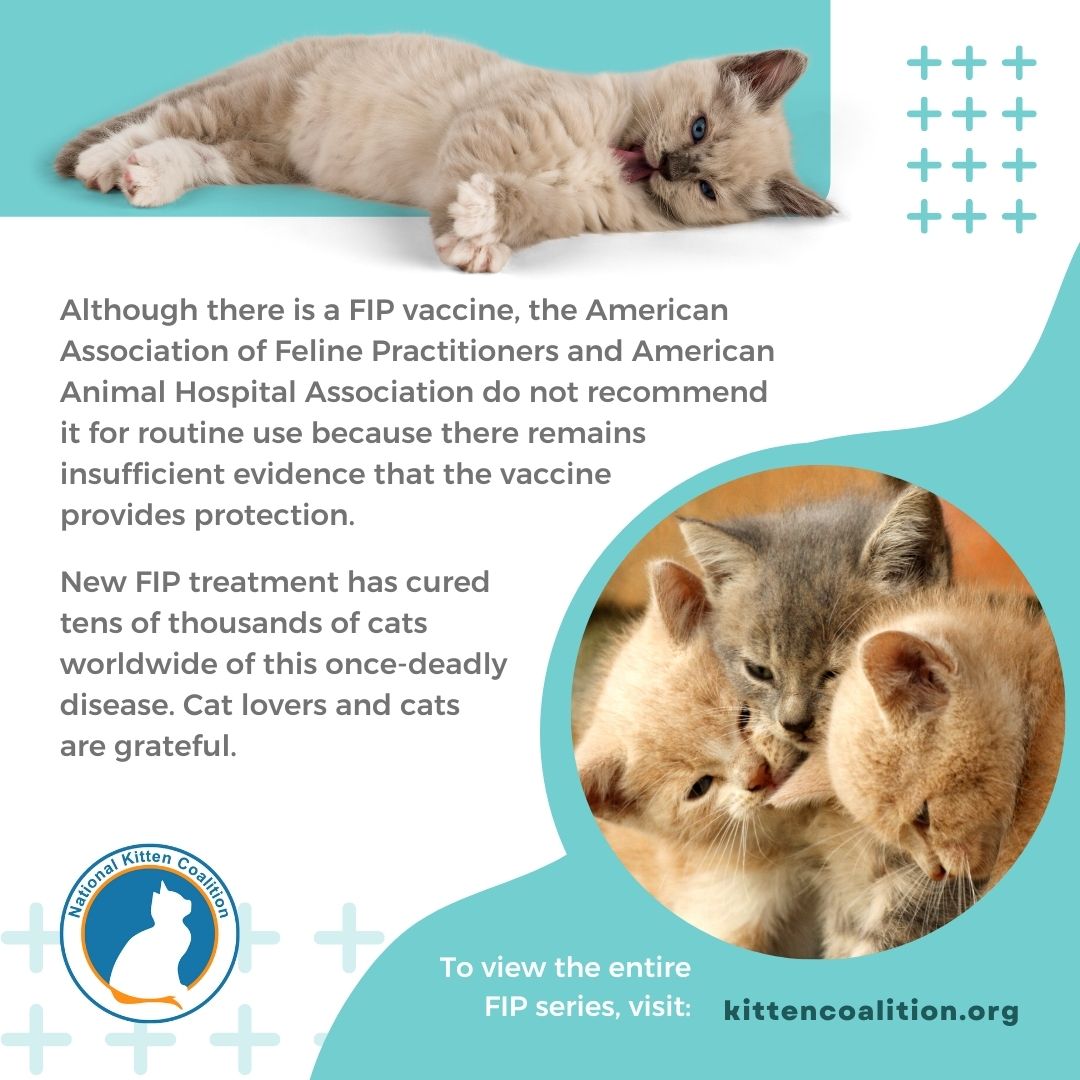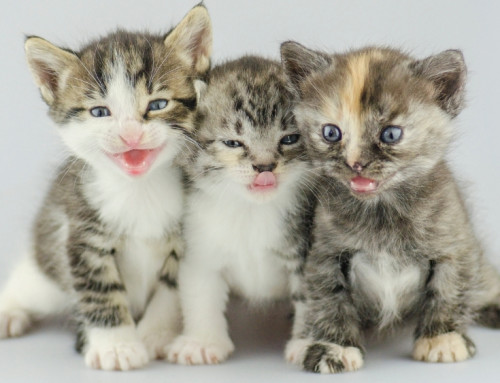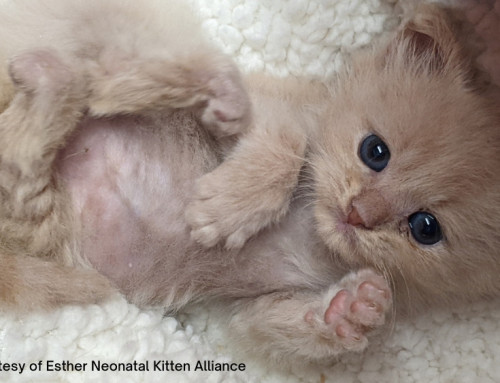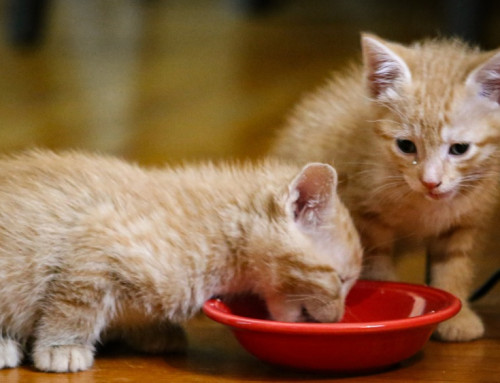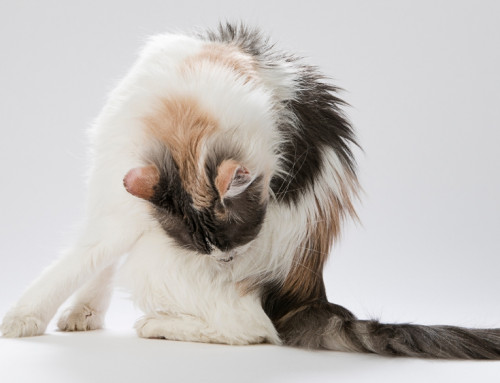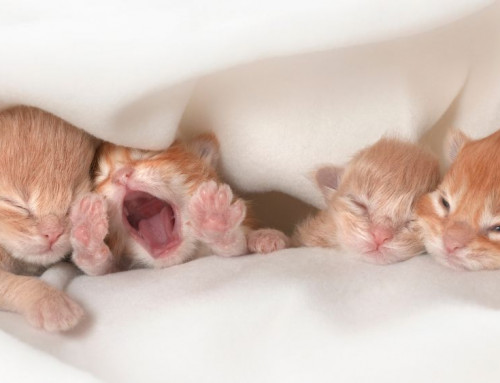Share this resource or email it to a friend!
NOTE: FIP treatment is rapidly changing. Please visit Cornell Feline Health Center, EveryCat Health Foundation, FIP Warriors and University of California Davis Koret Shelter Medicine Program for the most up-to-date information.
This is part 5 of a 5-part series on FIP. Please read parts 1-4 in The National Kitten Coalition’s blog.
As discussed in part 1 of this series, Feline Coronavirus (FCoV) occurs in 80-85% of cats, spreads through infected feces and is highly contagious. Under favorable conditions, FCoV is more likely to mutate into FIP.
Reducing stress, providing adequate sanitation and preventing overcrowding in multi-cat environments, such as catteries, animal shelters, rescue groups and sanctuaries, is important to help prevent FIP.
Overcrowding can occur due to increased length of stay, fewer adoptions and cats coming from high-risk areas/situations. FIP in more than 1% of a shelter’s population is cause for concern. Some things to consider include:
- Developing robust fostering programs, so all kittens immediately go into foster care until they’re ready for adoption; if not all kittens, especially bottle-raised kittens, queens with kittens and undersocialized kittens. No matter how wonderful the shelter, it’s still stressful and also increases exposure to infectious diseases.
- Housing cats in groups of no more than 3-5 cats and having adequate space (vertically and horizontally) for each cat in the group, as well as separate litter boxes and places to eat.
- Keeping groups stable; avoid moving cats in and out or mixing long- and short-stay cats.
- Encouraging people who find a litter of kittens to leave them alone (if not in imminent danger) and see whether the queen returns.
Although a coronavirus-free environment is nearly impossible, except in specialized laboratories, control and prevention are important and include:
- Providing adequate numbers of litter boxes.
- Cleaning litter boxes daily and disinfecting weekly.
- Disinfecting rooms, cages, bedding and litter boxes between groups of kittens/cats.
- Clipping/cleaning fur from the rear end of cats, especially those with long hair, so that feces don’t accumulate there.
Although there is a FIP vaccine, the American Association of Feline Practitioners and American Animal Hospital Association do not recommend it for routine use because there remains insufficient evidence that the vaccine provides protection.1
New FIP treatment has cured tens of thousands of cats worldwide of this once-deadly disease. Cat lovers and cats are grateful.
- 2022 AAHA/AAFP Feline Vaccination Guidelines (American Animal Hospital Association)
